Anyone who has an aquarium should know the basics of photosynthesis. Water, carbon dioxide, lighting, then we get organic compounds and a by-product in the form of oxygen. This process is as old as the oldest plant on this planet.
If it happens naturally, why is there a need to implement a CO2 injection in our planted aquariums? In today’s article, we are going to answer this question. If the answer sounds yes, what are the methods to do that? You can’t simply put a gas cylinder in a fish tank and unscrew the valve. Carbon dioxide gas would not simply dilute in the aquarium water. You need special equipment to enrich your fish tank with CO2 injection.
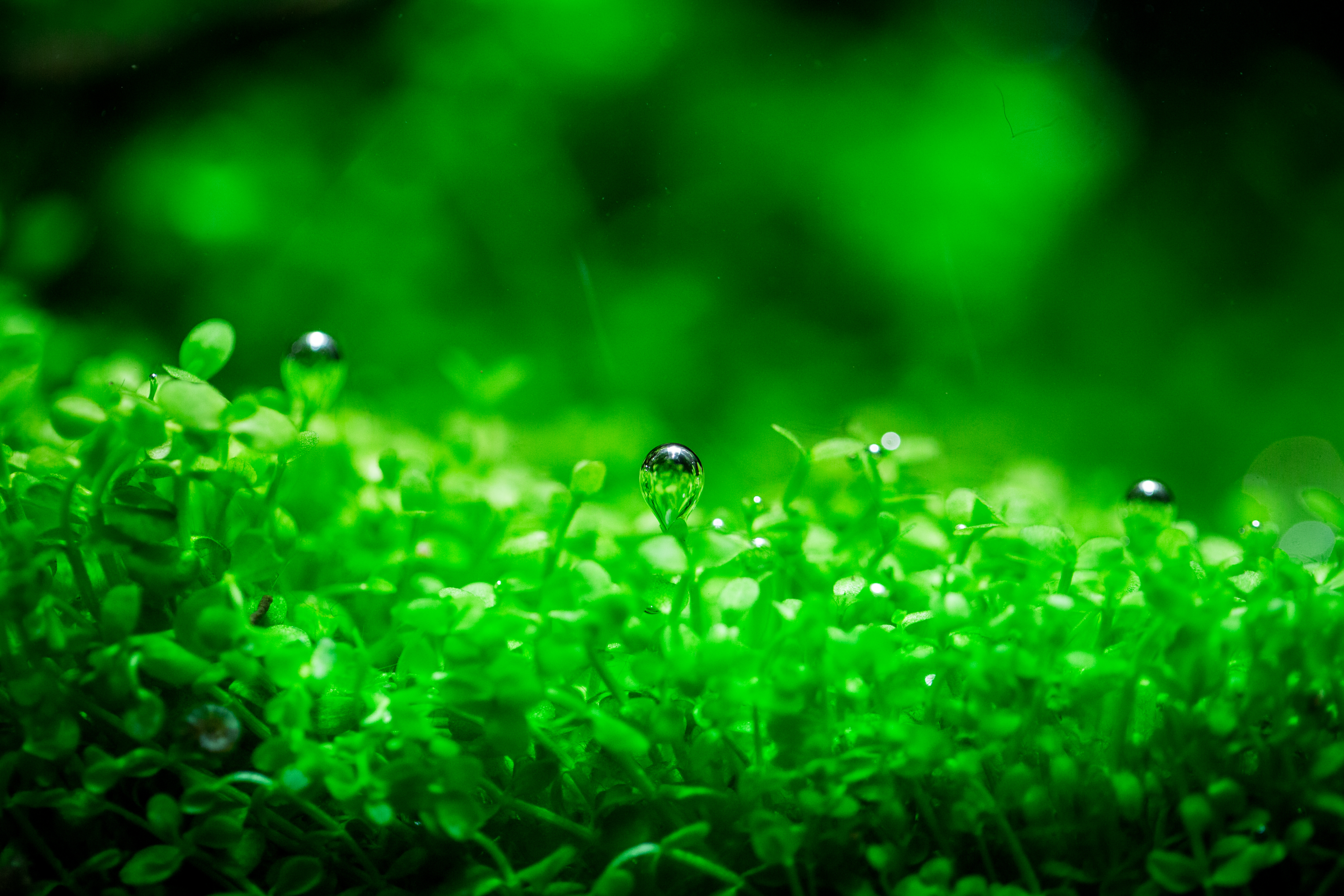
What impact has carbon dioxide had on our aquarium plants?
First of all, the fact is that the concentration of CO2 is relatively low in our artificially-made environment. Organic breakdown and underground CO2 deposits in nature produce 10 times more CO2 than what is naturally present in our aquarium setting.
Planted aquariums with a CO2 injection kit installed notice a significant increase in plant growth than in low-tech aquariums. It helps to get lush, colourful plants and dense carpets. Plants with access to carbon dioxide also have better overall presentation and shape. If there is not enough carbon dioxide, you may observe ultra-thin stems, dwarf leaves, and yellowish or brownish colouration. If this situation is prolonged, this can lead to the death of your plants.
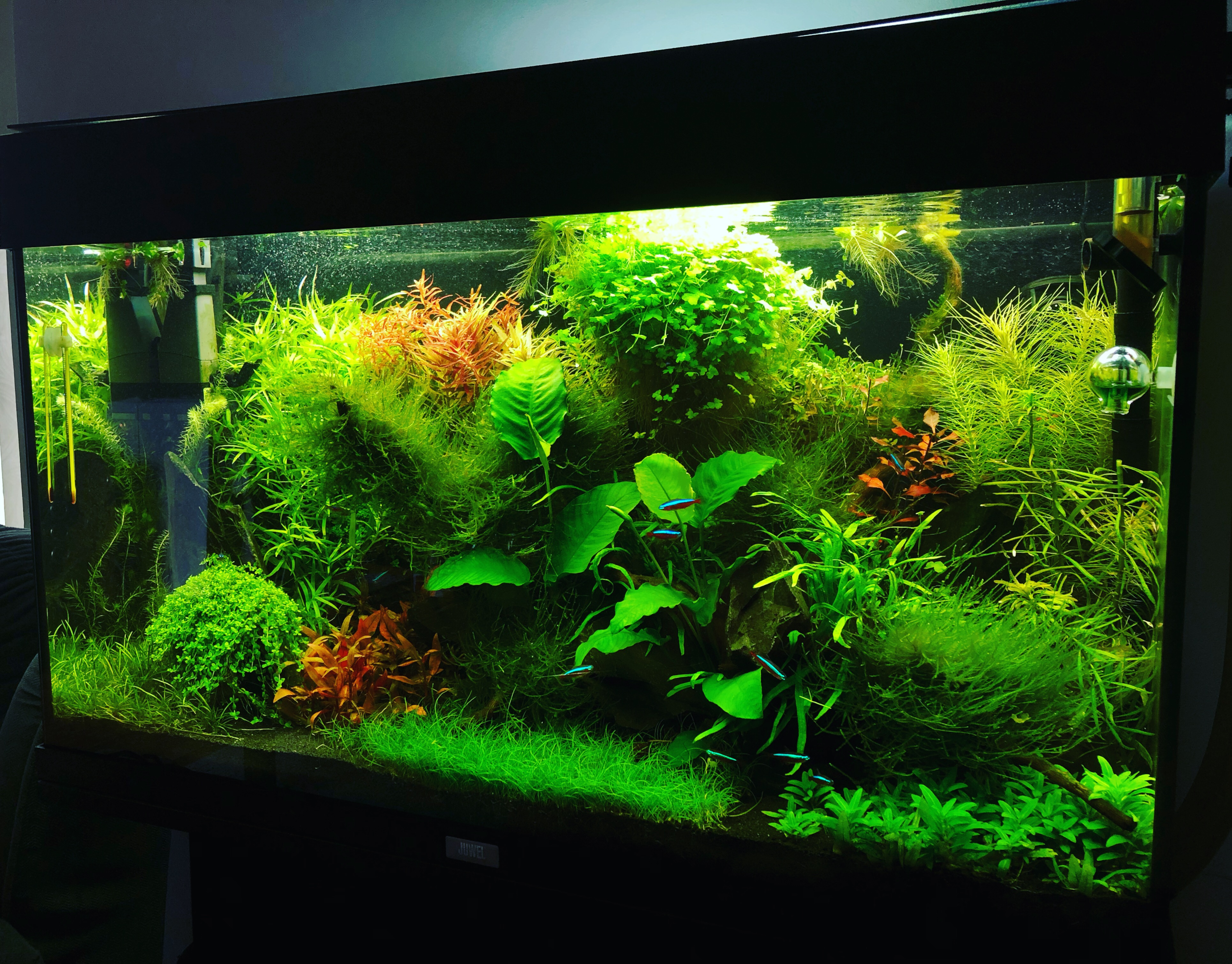
Is CO2 diffusion harmful to fish?
Too high CO2 concentration can block fish respiration. However, if you conduct the CO2 injection process correctly, it is profitable for fish because most fish prefer tanks with dense vegetation, for instance: small Tetras, Rasboras, and Dwarf Gouramis.
Such planted aquariums allow fish to hide among leaves. It’s also a better chance to survive for baby fish. By balancing the concentration of CO2 for demanding plants and sensitive fish, you guarantee a healthy ecosystem in which these organisms will live happily ever after.
What CO2 diffusion methods are available on the market?
People are using different products for their planted aquariums. You can supplement carbon dioxide in your planted tanks in many ways. Gas or liquid injection is the most popular among them. Carbon dioxide gas can be administered in three ways: pressurized system, yeast-based and aerosol. The last one is probably the cheapest alternative; however, the pressurized system would be the best choice if you want something durable and efficient. These systems are considered the most straightforward option because they automatically deliver adequate levels of CO2 to your aquarium.
Remember to rely on proven brands. You will get the best quality CO2 kits at an affordable price at CO2Art. Visit our site here.
Types of CO2 diffusers
If you have already selected a gas cylinder, regulator, valve, or tubing, here come the times for the last element on the CO2 assembly. The main difference between them is that they match different aquarium sizes.
A diffuser is what breaks down CO2 before it enters the aquarium water. Thanks to the CO2 regulator, carbon dioxide builds up behind the ceramic membranes of the diffuser and slowly breaks down into tiny bubbles. Those little bubbles flow into the water, forming a fine mist easily absorbed by the aquarium plants. Without this thinning, plants would not be able to absorb CO2. As a result, we do not receive the plant growth we hoped for.
Without the diffuser, the entire CO2 system is not complete, and CO2 injection is impossible. Diffuser options come down to two methods. Both have the same quality and maintain the optimum level of carbon dioxide.
Inline diffuser
We have two sizes of inline atomizers: 12/16 and 16/22. The most significant advantage of the inline atomizer is that it’s an external diffuser with less equipment inside the tank. Putting too many devices into the fish tank can spoil the overall aesthetics of the aquarium.
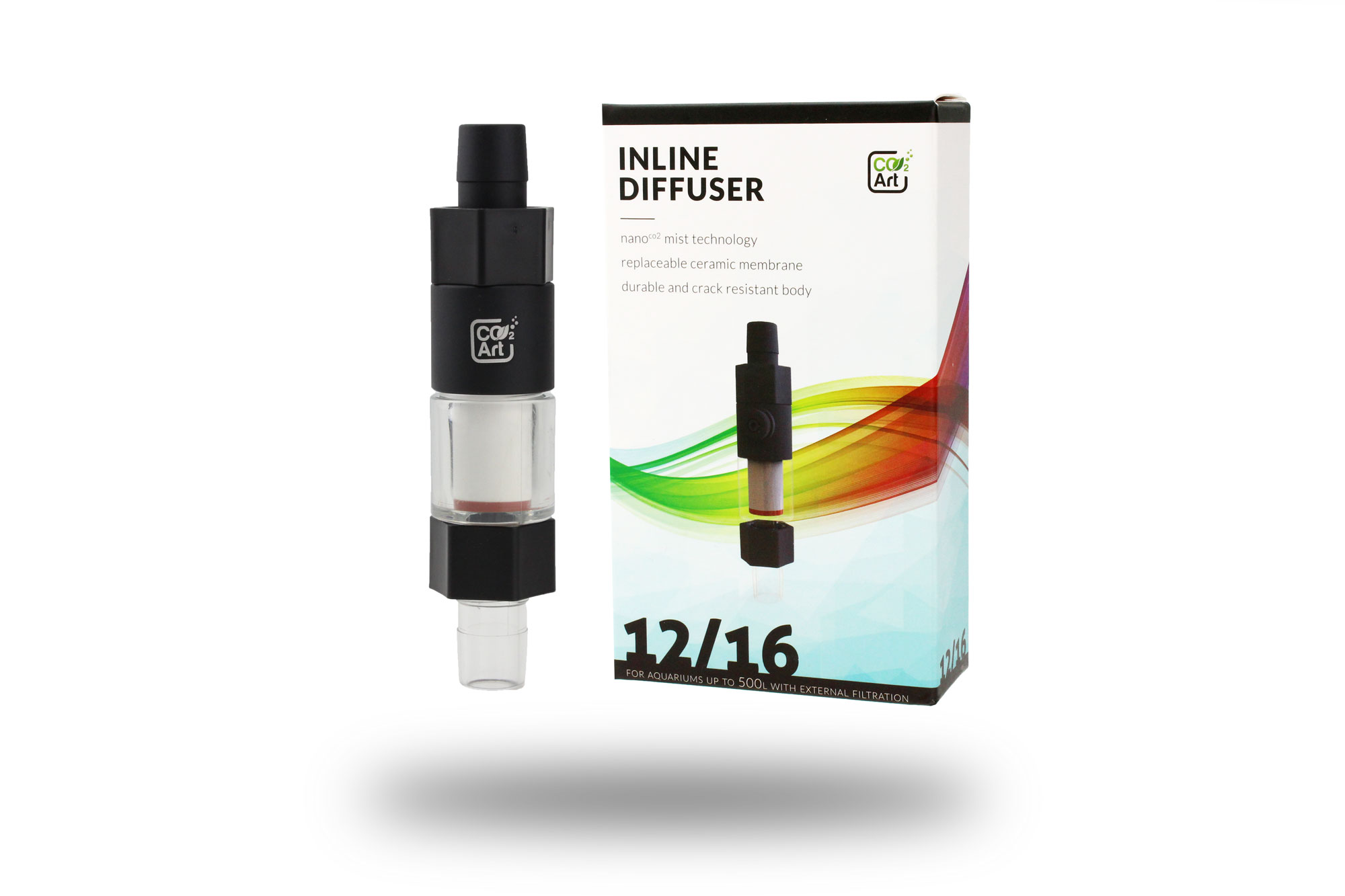
In tank diffuser
The In-tank diffuser is an atomizer attached to the inside aquarium glass with a suction cup. There are two models available on our site. You decide which one meets your needs.
First up is Bazooka Flux Diffuser which comes in two sizes: small tanks (below 250l) and larger tanks (above 250l). Because of the increased surface area, the bubbles are conveniently dissolved into the aquarium water.
The second option is the IO Diffuser, which comes in two versions: acrylic and stainless steel, each in two sizes: small for tanks below 150l and large for tanks above 150l. Both materials work perfectly, and it’s a matter of aesthetics. Choose which one you like more. Stainless steel looks more elegant, whilst the acrylic version is light and subtle.
Both IO diffusers have a replacement ceramic membrane ring that you can purchase separately. The ring delivers CO2 into the aquarium, diffusing a fine mist of bubbles in the aquarium water. Remember to set the pressure on your regulator to a minimum of 2 bars as a starting point. During the first hours, you may observe giant bubbles coming from the diffuser. It happens because the ring pours fill with water, and then the bubbles change into the nano mist.
How do you measure CO2 levels?
Drop checker
There are a few methods to monitor CO2 levels. You can use a bunch of testing kits. However, we recommend you try the drop checker method. It measures the concentration of CO2 constantly.
Submerge the CO2 drop checker entirely in the tank, and then the carbon dioxide will flow from the aquarium water into the drop checker and be absorbed by the indicator solution. Depending on the concentration of CO2, the indicator solution will change its colour.
Having placed your drop checker, wait at least 12 hours before changing anything. After this time, the readings will be accurate. Three options may appear:
If the indicator solution turns blue, the water is alkaline (above pH 7). It means that you can increase the CO2 injection.
If the indicator solution turns green or lime-green, the water is neutral (equal or almost equal to pH 7). It means that the CO2 dosing is correct.
If the indicator solution turns yellow, the water is acidic (below pH 7). It means that you should reduce your CO2 dosing.
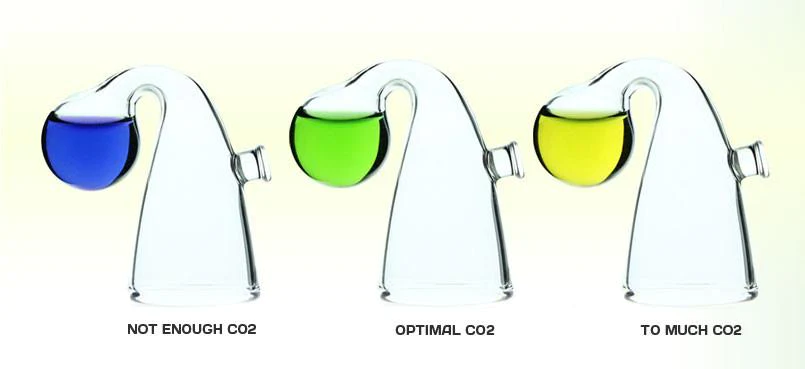
It’s worth mentioning that carbon dioxide affects the pH levels of aquariums because dissolved CO2 turns into carbonic acid in the water. With the addition of CO2, the water turns more acidic.
Bubble counter
Another method to control the amount of CO2 injected into the aquarium is using a bubble counter. This device allows us to estimate how many bubbles pass through the whole CO2 system per minute. Remember that starting from the lowest rate is wise, gradually increasing the number of bubbles.
If the drop checker method is combined with the bubble counter, it gives us pretty accurate readings.

Summary
Having an aquarium is a fantastic hobby. It’s worth investing once in a durable diffuser that will last for years. Consider all advantages and disadvantages of in-tank and inline diffusers before purchasing. CO2 injection will vastly improve your plant growth. With a little forward thinking and careful planning, you can install the best system suited for your aquarium and, of course, your bank balance.
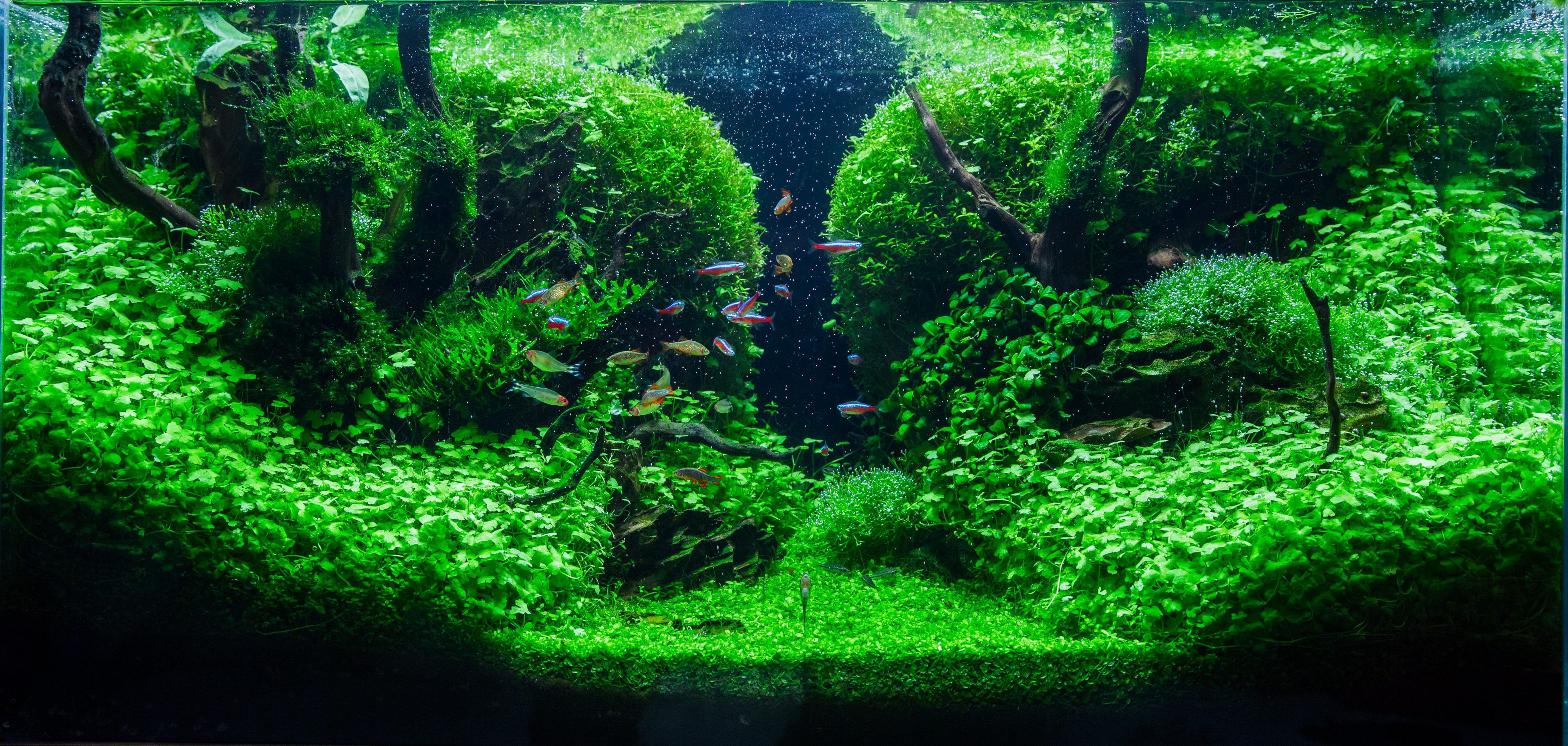


Comments ( 13 )